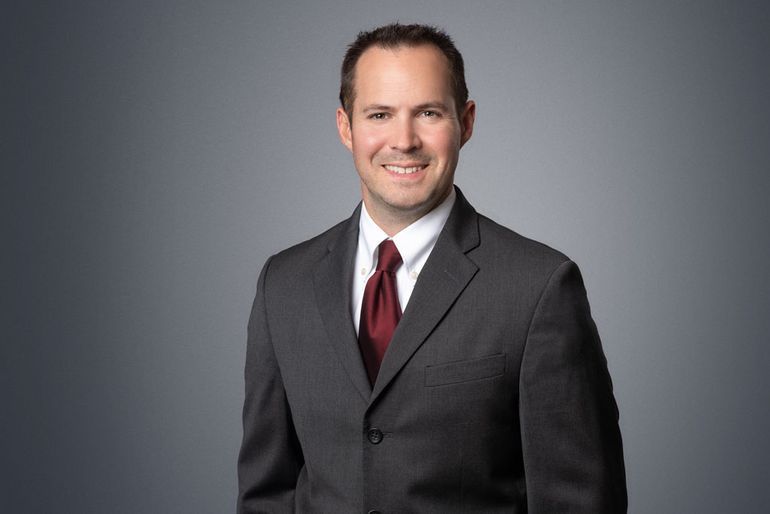News & Insights
Legal Alert

Rain or Shine, Changes to California’s Construction General Permit Are on the Horizon
Environmental & Natural Resources
8.08.23
Municipalities, landowners, developers, and others engaged in construction activities in California have faced increasing regulatory scrutiny over alleged stormwater discharge violations in recent years, including a record high $6.6 million in civil penalties assessed for unauthorized sediment discharges from a construction site in Orange County in June 2022 (currently on appeal). (See our prior alert here). In light of heightened regulatory attention and the potential for increasingly aggressive citizen suits, it is important for all parties involved in construction activity in California to prepare for the approaching 2023-2024 wet season and take note of changes to the Construction General Permit (CGP) effective on September 1, 2023. The latest CGP includes a number of significant changes and new requirements that increase compliance burdens and risks. Participants in the CGP program must take necessary steps to ensure compliance with these new requirements or face potentially significant environmental and monetary consequences.
Adoption of 2022 CGP
Pursuant to the federal Clean Water Act, the California State Water Resources Control Board (Water Board) in 2009 adopted the statewide CGP, a National Pollutant Discharge Elimination System “general” permit regulating the release of sediment and other potential pollutants into waterways from construction sites. The CGP applies to clearing, excavating, grading, and other construction-related activities disturbing over one acre of land or smaller projects that are part of a larger development disturbing more than one acre of land. Among other requirements, the CGP mandates the development of a Storm Water Pollution Prevention Plan (SWPPP), a site-specific plan for achieving and maintaining permit compliance.
The 2009 CGP expired in 2014, but it was administratively extended to give the Water Board additional time to develop and adopt a new permit. Following input from environmental groups, representatives of the building and construction industry, and other stakeholders, the Water Board adopted the new CGP on September 8, 2022. The new CGP goes into effect on September 1, 2023, and will apply in full to any project that secures coverage under the CGP on or after that date. However, existing projects that secured permit coverage prior to this date will be grandfathered in for two years and not be subject to the new CGP requirements until September 1, 2025, with limited exceptions.
Key Changes in 2022 CGP
The new CGP includes the following significant changes:
Total Maximum Daily Loads (TMDL) Implementation
TMDLs are regulatory tools that identify the maximum amount of a pollutant a watershed can receive while still attaining water quality standards. The 2022 CGP incorporates TMDL requirements for construction stormwater discharges through the imposition of Numeric Effluent Limitations (NELs) for specified projects that discharge to a TMDL-designated water body. Applicable NELs and corresponding additional BMPs vary by Region, receiving water body, and pollutant, and are set forth in Attachment H.
Debris and Trash Discharge
The 2022 CGP expands the prior CGP prohibition on the discharge of debris from construction sites by requiring implementation of “trash management, treatment, and institutional controls” to “eliminate” such materials from “all” stormwater and non-stormwater discharges. If a discharger fails to comply with this “outright prohibition,” it must submit an amended SWPPP to the applicable Regional Board setting forth controls that achieve “full capture system equivalency.”
Passive Treatment
Passive treatment refers to the application of natural or synthetic chemicals to reduce turbidity in discharges. While the 2022 CGP prohibits the use of passive treatment systems as a “standalone” Best Management Practice (BMP) for site erosion and sediment control, dischargers that choose to implement such systems as part of a broader BMP strategy must comply with a host of new requirements ranging from chemical storage and training to system design, use, testing, monitoring, and reporting as set forth in Attachment G.
Replacement of Rain Event Action Plan (REAP)
The 2022 CGP removes REAP, which was used under the prior CGP to provide an on-site inspection checklist for dischargers prior to a precipitation event. The 2022 CGP now implements “more action-based requirements in lieu of the reporting-based strategy embodied by the REAP” with: “1) Qualified SWPPP Developer (QSD) involvement over the life of the project, 2) additional inspections and visual observations, and 3) an increased requirement to document and implement [] site corrective actions.”
Sampling and Monitoring
Heightened sampling and monitoring requirements, including additional on-site inspections and assessments from QSDs and Qualified SWPPP Practitioners (QSPs) are set forth in the 2022 GCP. QSDs and QSPs are required to perform on-site visual inspections at intervals that reflect potential changes to the construction site (e.g., at the start of construction, or upon replacement of a QSD). The 2022 CGP also replaces the former Qualifying Rain Event, which was defined as an “event that produces 0.5 inches or more precipitation with a 48-hour or greater period between rain events,” with the Qualifying Precipitation Event (QPE), which is defined as a forecast of 50 percent or greater probability of precipitation of 0.5 inches or more within a 24-hour period. This change has significant compliance implications as the QPE is the triggering mechanism for many inspection, sampling, monitoring, and reporting requirements.
Next Steps
Although certain parts of California may not have seen rain in weeks or even months, dischargers should begin taking steps now to prepare for the coming wet season, particularly in light of the new CGP and heightened enforcement activity. Suggested steps include reviewing and updating SWPPPs, stabilizing work sites, training personnel in stormwater compliance, and making arrangements to purchase any goods or services necessary to implement BMPs.
We will continue to monitor and report on key developments facing CGP permittees. In the meantime, if you have any questions, please contact Shawn Cobb or Bridget Cho for further information.
Authors
Partner
Associate
RELATED SERVICES
RELATED INDUSTRIES
Allen Matkins Leck Gamble Mallory & Natsis LLP. All Rights Reserved.
This publication is made available by Allen Matkins Leck Gamble Mallory & Natsis LLP for educational purposes only to convey general information and a general understanding of the law, not to provide specific legal advice. By using this website you acknowledge there is no attorney client relationship between you and Allen Matkins Leck Gamble Mallory & Natsis LLP. This publication should not be used as a substitute for competent legal advice from a licensed professional attorney applied to your circumstances. Attorney advertising. Prior results do not guarantee a similar outcome. Full Disclaimer


